Of course it was the day that rained. The day we had planned to hike more than 2km to see an uncovered, ruined castle perched on the side a mountain. But since our days in Portugal were limited and I was not giving up Sintra, we decided to brave the weather and catch the train to Sintra. The main reason for our day trip? The Castelo dos Mouros or, the Castle of the Moors.
And did it rain? Oh of course it did. But was it worth it?
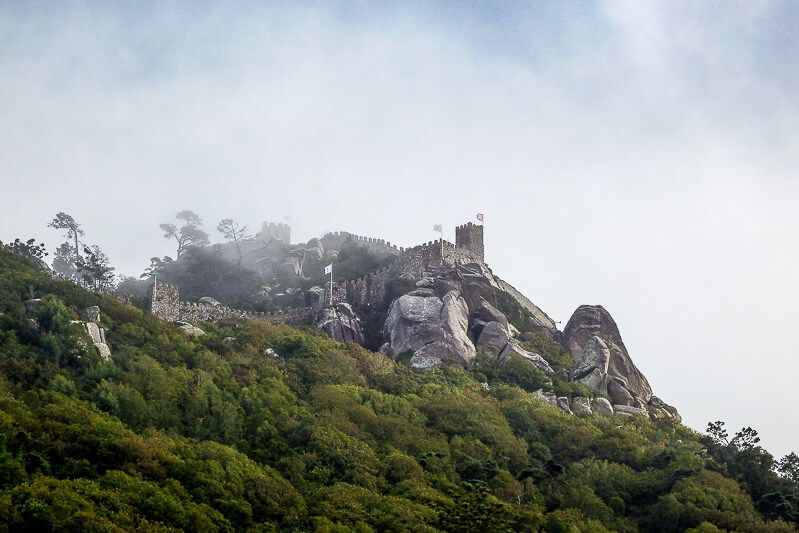
But first, what was it about this castle that called to me? Even now I’m not sure. I could go with my love of history. The Castelo dos Mouros is a ruined castle dating back to the 10th century. It’s called the Castle of the Moors because it was built by the Moors. (The Moors were African Muslims who conquered and controlled parts of Spain and Portugal for almost 700 years.)
Because it’s, you know, over a thousand years old, much of the castle has been reconstructed. But you can still get a feel for what it must have been like all those years ago.
And while this history fascinated me, it was not the only reason I had to experience this place. Though I did have other reasons as well. Like the view.
Because the Castelo dos Mouros is perched on the side of a mountain, it has one of the best views in Sintra. Situated 412 meters above sea level, it soars over Sintra-Vila. Standing on the ramparts you have a panoramic view of not only the town but also of the entire countryside.
That is, if it’s not raining and covered in a blanket of fog.
Most people come to Sintra to check out Pena Palace (the 19th century wackiness that looks straight out of a cartoon fairytale). But I was drawn to the ruins of the Castelo dos Mouros. It has a fascinating history and great views of Sintra but there was something else. Something that I couldn’t quite verbalize before seeing the castle, and something that’s just a little hard to describe after experiencing it. And while some guidebooks even said to skip it, I knew it was for me. This was my reason for coming to Sintra. I needed to see this ruined Moorish castle.
We left Lisbon early in the morning and though we changed trains briefly, we arrived in Sintra in under an hour. Stepping out of the train station and looking up, my worries deepened.
Rain had not yet fallen but the sky was covered in gray, ominous clouds. The air was chilly and as I wrapped my scarf tighter around me, I instantly regretted my clothing choice for the day.
After a quick powwow, we decided to try to catch the tourist bus to our destination. The Scotturb bus 434 circles by the train station, Sintra-Vila, Castelo dos Mouros, and Pena Palace. At only €5, we knew this was a good deal. As we reached the stop by the train station, we felt even more vindicated in our choice. We were the first people in line. SCORE!
Until we waited over 30 minutes for the bus. And then when it did arrive, it stopped in the middle of the now 100+ deep line. Swarms of tourist crammed themselves towards the door. At now the far end of the mass of bodies, we knew there was no way we were getting on that bus. We didn’t even try to fight through the masses. I just simply stared at the incredulous bus driver (wasn’t the actual bus stop where we were standing???) and watched my dreams of arriving at the castle dry and un-sweaty vanish before my eyes.
Let the hike begin.
We headed back past the train station and down into town. The road to Sintra-Vila winds around a large ravine, but you can see the National Palace across the gap. About 1km from the train station, you hit the village proper.
Now look up. See that stony structure hanging on the cliff edge? Yep that is the Castelo dos Mouros.
The trail to the castle though doesn’t follow the main road. Instead it winds its way up the back of Sintra-Vila and then around to the left where you find a sign pointing you up a woody trail. It can be hard to find this trail at first but there are signs pointing you in the right direction. And after only one small mishap, we found it. See the map at the bottom of this post for the walking path.
I should probably mention that at this point, as we reached the beginning of the actual trail, we were already regretting our decision of not pushing the other tourists out of the way to get on the bus. The castle is on top of a mountain. The village is basically at the bottom of the mountain. The hike through the town to the trail is steep and we knew it was only going to get steeper. We were already panting and we were nowhere near the top of the mountain.
But up we went. And I do mean up. The trail winds up (and up) through the forest. Thankfully there are things along the way to distract you from your panting. You can stop to enjoy the lookouts and read the informational placards along the way.
But there is no denying it; it is quite the climb. (Is Ryan leaning on the placard because it’s fascinating or because he needs to rest on something to catch his breath?)
But eventually…eventually…we reached the outer wall. The castle is surrounded by two walls. The outer, second circle of walls emerges out of the forest like a beacon of hope. It’s shorter than the main curtain wall and was built as an extra layer of fortification for the castle itself and for the population that lived around the caste. Because yep, the people who weren’t lucky enough to live in the castle, lived on these steep, steep slopes.
Now it was right about here, just inside these first walls, that the rain started. It only spit at first, nothing too alarming. And so we powered on.
We stopped into the Church of São Pedro located right outside the main curtain wall to not only avoid the rain but to view the archaeological exhibits. The Church was founded in the 12th century (after the Moors were kicked out) and it now houses the most significant artifacts from the castle’s history. Starting in the 1970s and running until 2012, various archaeological excavations have been completed in and around the castle. The findings have provided significant information on the various populations that have made the castle their home.
But after realizing that the spitting rain wasn’t going to stop, we headed back out into the drizzle. Making our way up to the main entrance, we paused at the archaeological site to see the remains from both the medieval Christian necropolis (12th-14th c.) and the Islamic quarter it was built on top of (10th-12th c.).
But it was now time to head into the castle itself.
The first thing we encountered was the new Visitor Center – complete with a ticket booth, bathrooms, and a small snack bar. But before running off in search of those fabled views, we sought out the few great finds tucked among the Visitor Center: the granaries, the old stables, and the cistern. Rumor has it that the reservoir in the cistern has never dried up. Oh and that there is Moorish King buried beneath it.
But the real question was – do we continue on or try to wait the rain out? Because at this point, the spitting rain was becoming more rain-like and the wind was picking up. So much so that I strongly regretted not wearing a heavier shirt. With only my poor scarf wrapped around my body, the wind and rain were quite chilling.
In other words, it was freaking cold.
With our game faces on, we headed to the castle keep. Windy? Yes. Rainy? Yes. Fog rolling in fast? Oh yes.
The tower keep was the last line of defense for the castle against an attack in the Middle Ages. Today it provides a stunning view over Sintra-Vila. But for me it was here that I had to put my nice camera away (for fear of water damage) and pull out my smartphone to try to capture the mistiness that was quickly enshrouding us.
For with each step the air became blanketed with a deep fog. And it wasn’t long before the village below us and the view disappeared. Now there was only the castle. But as we made our way around the wall, the rain and the fog went from being a nuisance to being a blessing.
There was something mystical about exploring the ruins while they were shrouded in mist. For the fog had become so thick, the other side of the castle disappeared into the haze leaving only partially visible towers poking out of the gray.
Everyone else had fled the walls, seeking the small nooks and crannies to escape the rain, wind, and fog. But we were almost giddy. The castle was ours to explore. We encountered maybe only one other person as we made our way to the other side of the castle.
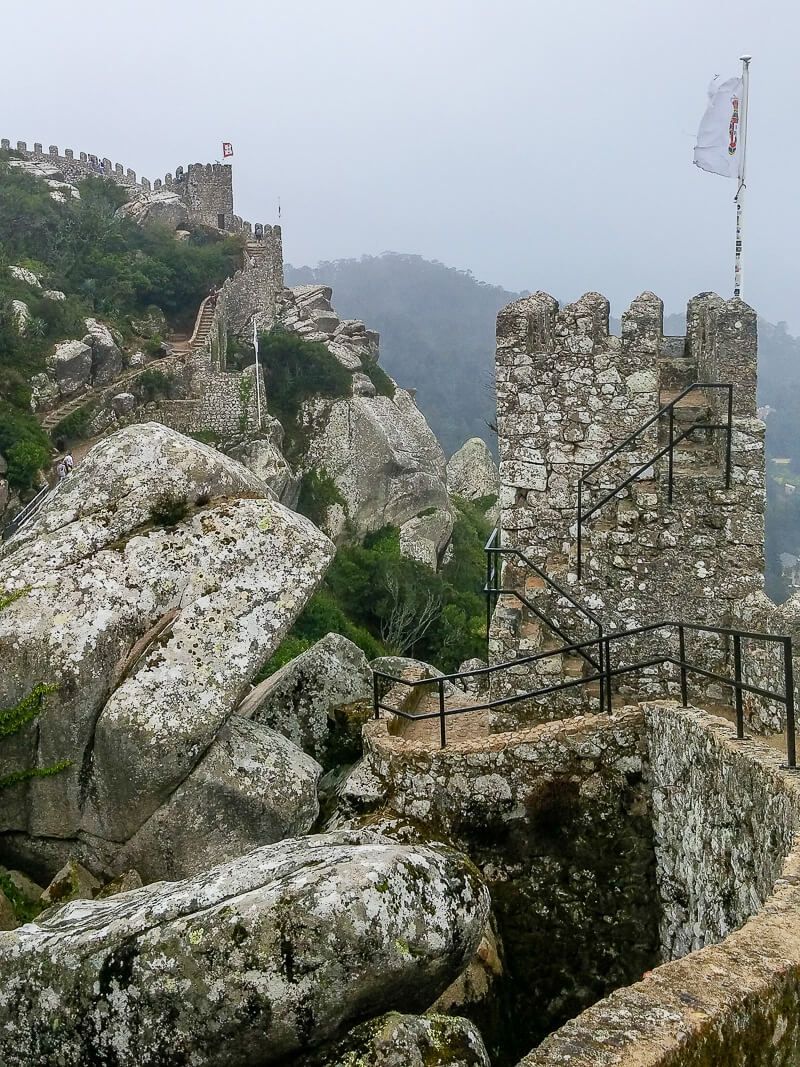
And with the fog so thick, all of the surrounding countryside disappeared. Pena Palace was gone, Sintra-Vila was a distant memory, and even the ground on the other side of the wall hid from us. There was only us and the castle. And our imaginations of course.
Were we in the 21st century exploring a thousand year old castle? Or could we be in the 12th century when these walls were controlled by the Moors? The view would be the same on a day like this. Nothing had changed about that. Or, as my imagination expanded, could we be in a fantasy novel? Would a dragon appear out of the fog and engulf us in flames?
So yea…sometimes my imagination can run away with itself. But I think that was what drew me to the castle in the first place. A thousand year old castle open to the elements. Built in a different age by a different people. Perched on a side of a mountain. Enshrouded in mist. When I stood on its walls, could I imagine myself in a different time…and place?
For me that answer was yes. And seeing the castle almost empty and covered in fog made that answer a resounding yes.
To say the experience was surreal wouldn’t do it justice.
The rain and fog would ruin the experience for many people. And the people we saw hiding from it did look miserable. But we went from dreading the rain to welcoming it. Sure we were soaked but the excitement of having the castle to ourselves made even the chill disappear. And standing on the various towers, with the wind threatening to pull me away, was thrilling.
I wouldn’t have traded that for anything.
But the Castelo dos Mouros is not a large castle. With just two main, and rather small, towers, there isn’t a ton to explore. After poking our head into every doorway, up every tower, and over every wall, we made our way back down to the center square of the castle, stopping briefly at the Door of Betrayal. An escape hatch named justly so since it could also have been used to let enemies into the castle.
With one last glimpse back at the misty ruins, we exited the castle and made the trek back down the steep trail.
As it turned out though, the rain was only temporary and by the time we made it to Sintra-Vila, it had stopped altogether. Should we have just waited the rain out then? For us that answer is no; the rain made our visit memorable. And glancing back at the Moorish Castle it became clear that the mist surrounding the ruins may just be a permanent feature on a day like this.
So did it rain? Of course. But was Castelo dos Mouros still worth it?
Hell yes.
History of the Moorish Castle
To learn more about Castelo dos Mouros’ history, check out the Parques de Sintra’s site.
How To Get to Castelo dos Mouros
By Bus:
There are several tourist buses that circle Sintra and take visitors to the various sites. The one we tried to take was the Scotturb bus 434. This bus stops at the train station, Sintra-Vila (Sintra Village), Castelo dos Mouros, and Pena Palace. Since the village, the castle, and the palace are the three most popular sites, this is by far the most popular bus.
A bus ticket costs €5 and you can hop on and hop off at the various stops. I’ve also read that the ticket is good in only one direction so you may have to buy 2 tickets if you want a ride back. But I’m not 100% sure this is the case since we weren’t able to actually get on the bus.
To find the bus stop, go right after exiting the train station and you’ll see the stop in about 100 yards.
By Walking:
This is quite the journey. From the train station to the start of the trail is about 2km. The trail then takes you up the rest of the mountain to the castle. While this isn’t exactly short or easy, it is doable. And the way back is much more pleasant. We met a lot of people who had taken the bus to the castle and then walked back to town.
(You can also view this map in Google Maps.)
– Would you want to visit a castle on a rainy day? –
Nitty Gritty
Hours. 9:30-20:00 (summer season) or 10:00–18:00 (winter season). The last tickets are sold one hour before closing.
Cost. €8 but there are discounts for children and seniors. If you plan on visiting multiple Sintra sites, consider buying a combination ticket. Just ask the ticket office for details.

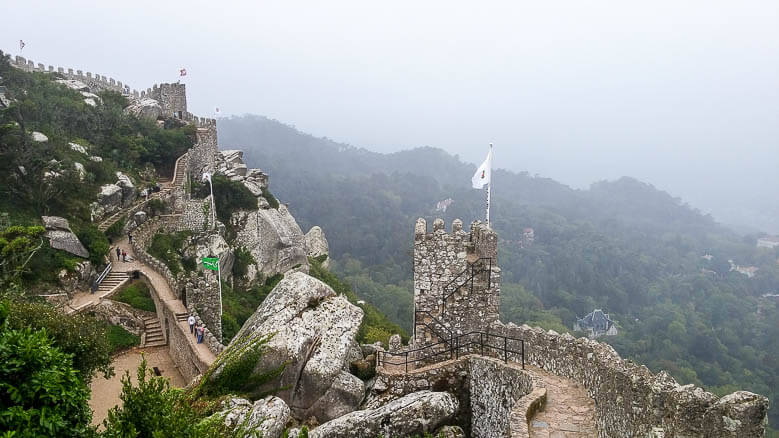
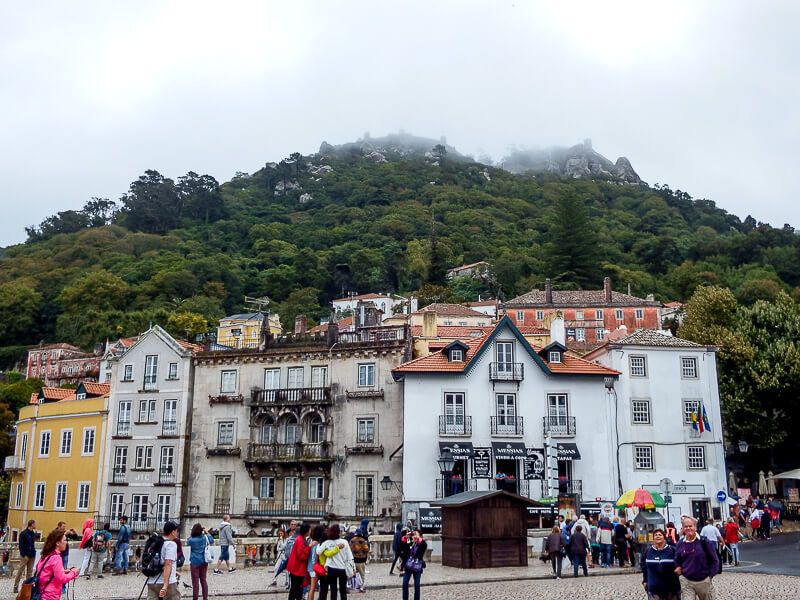
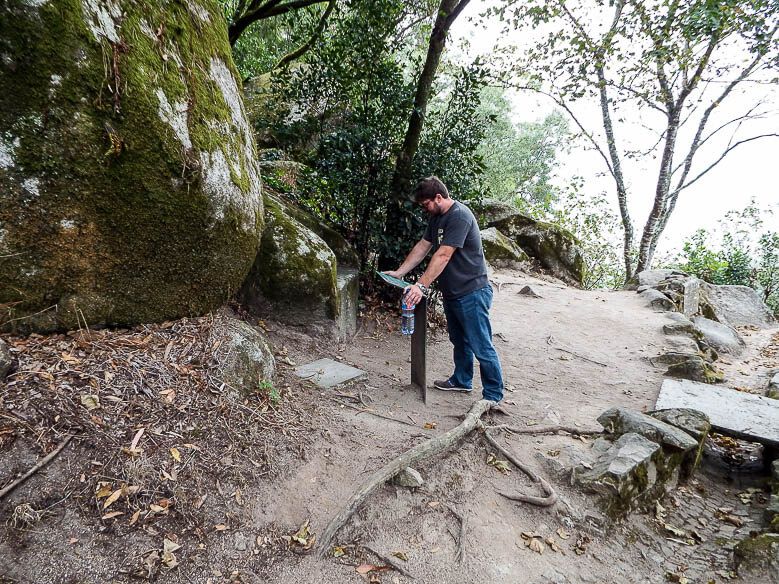
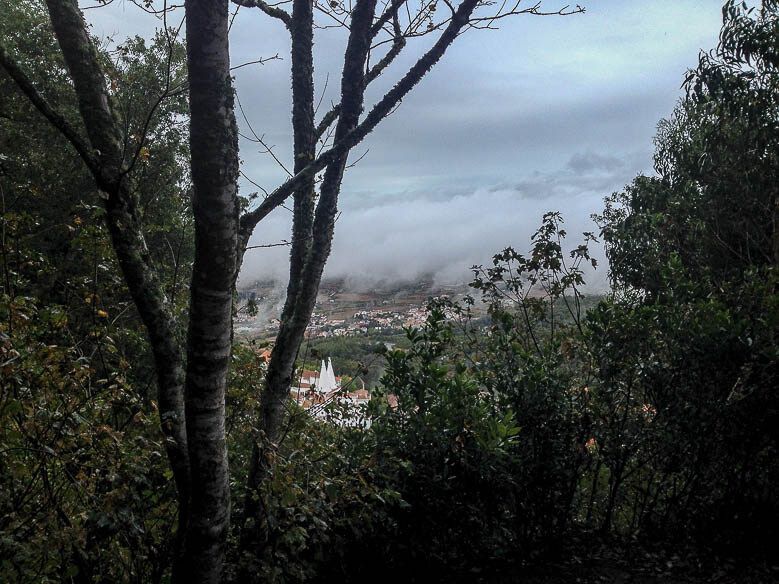
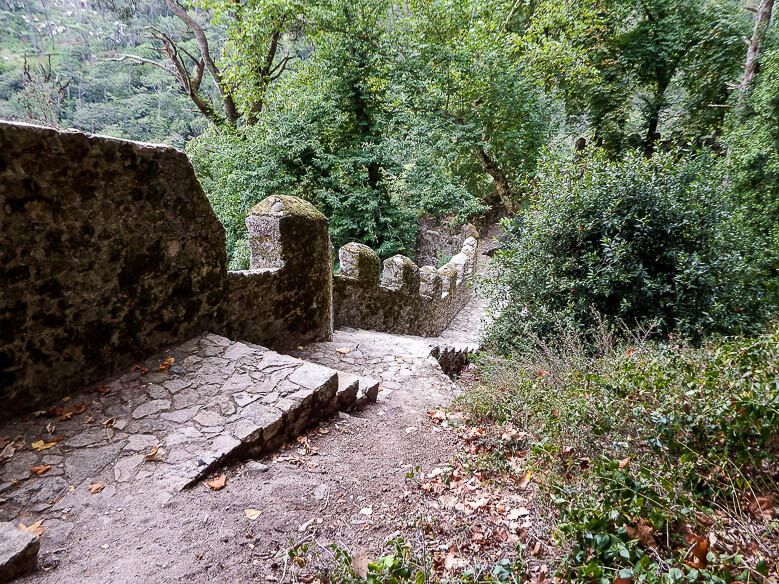
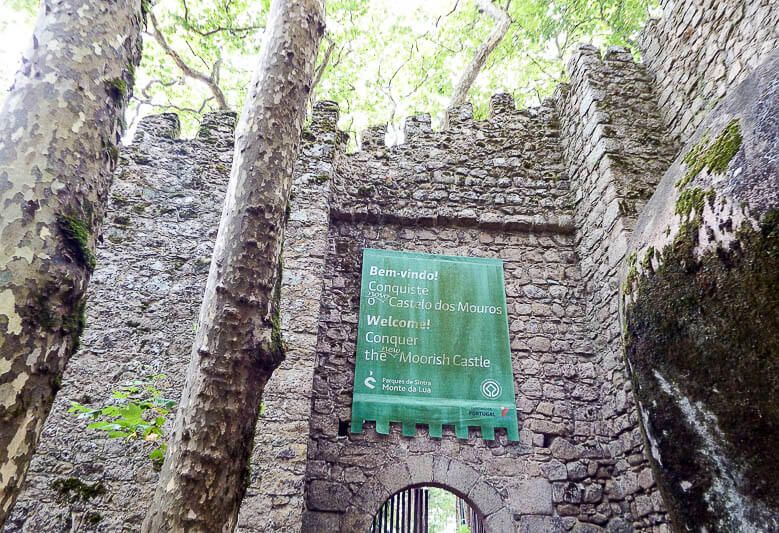
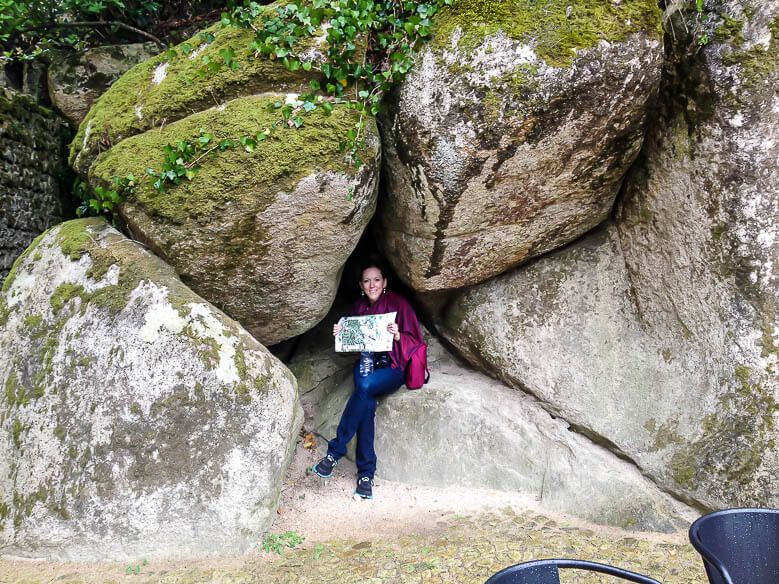
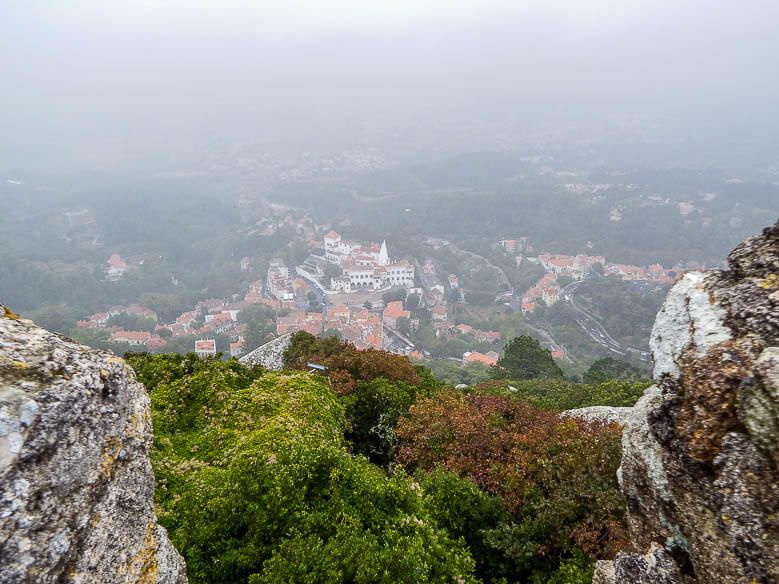
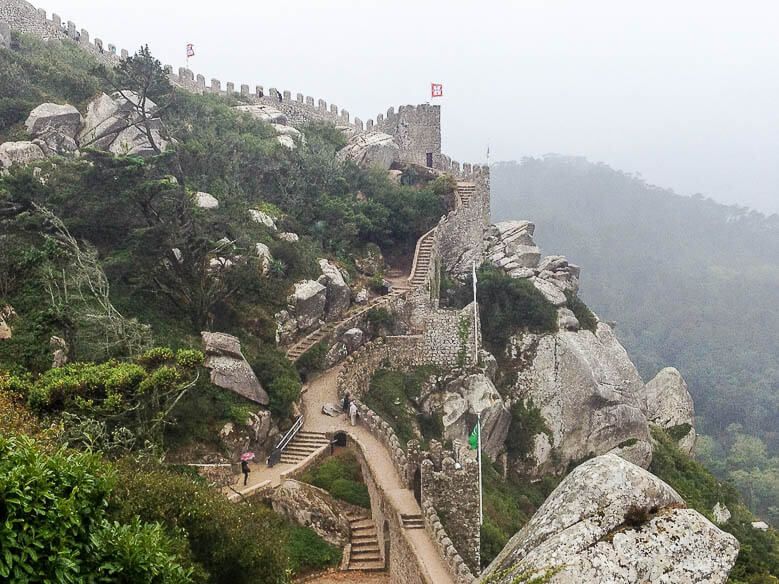
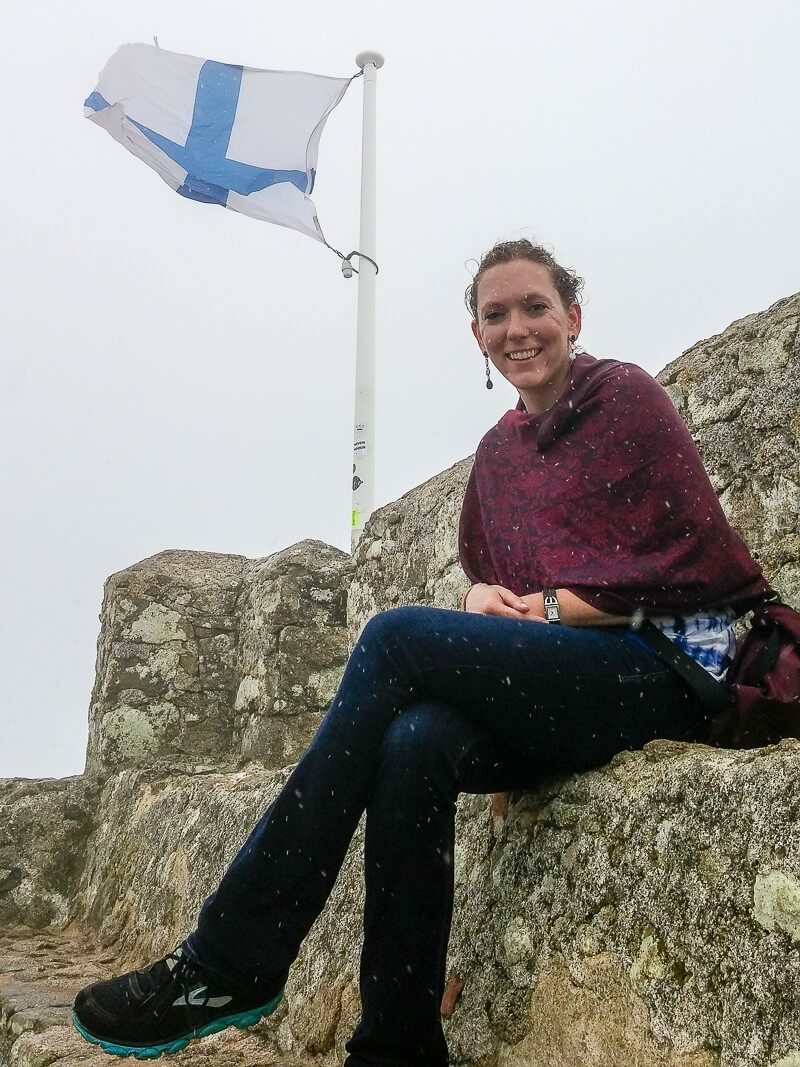
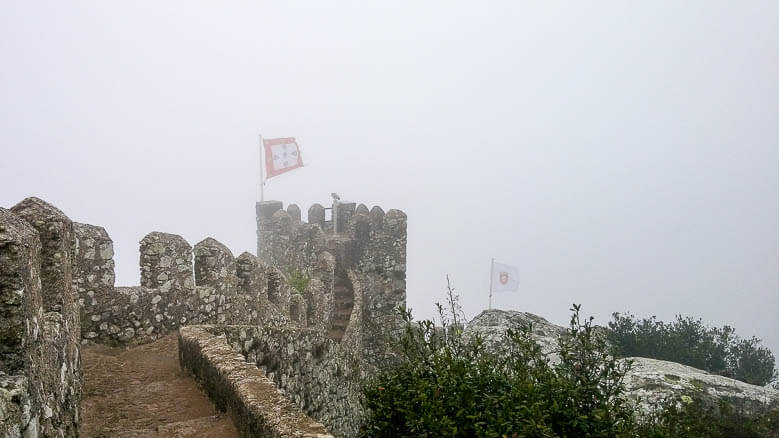
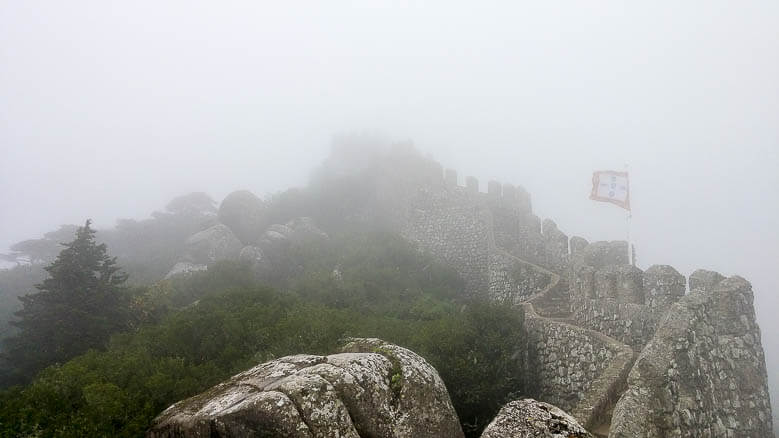
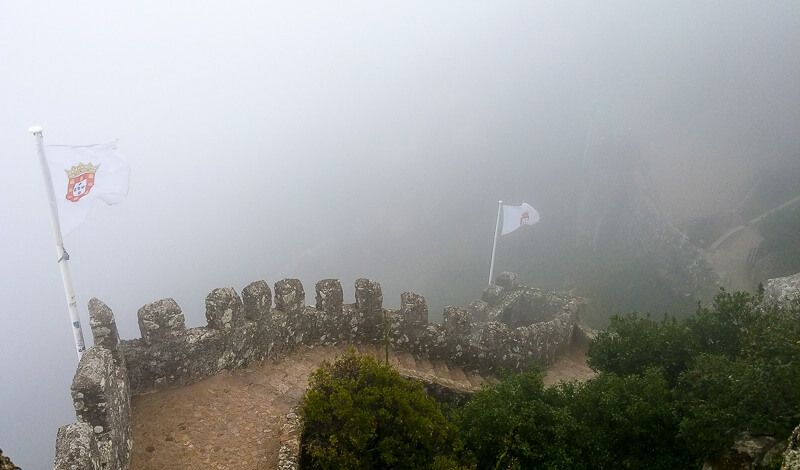
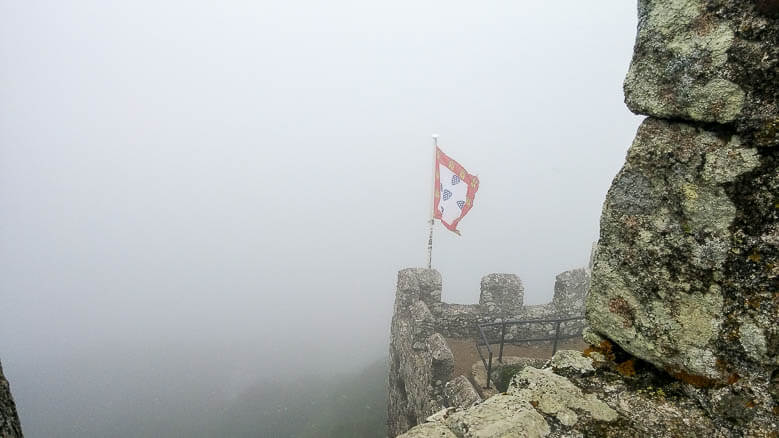
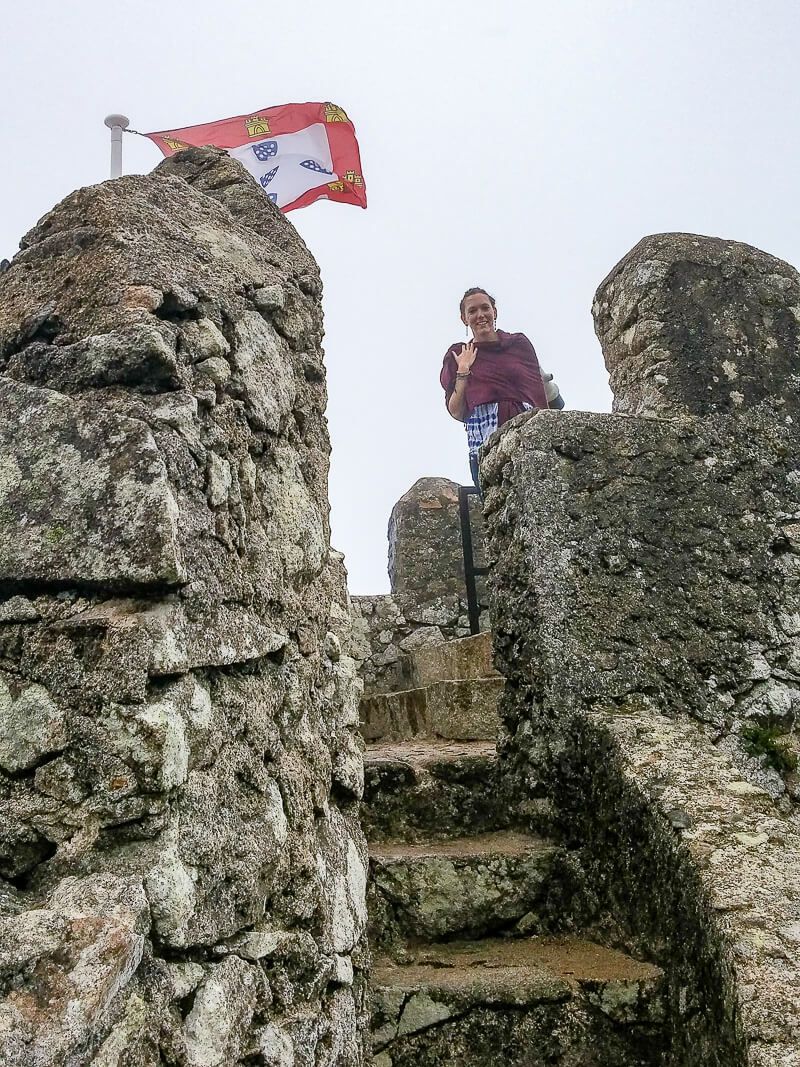
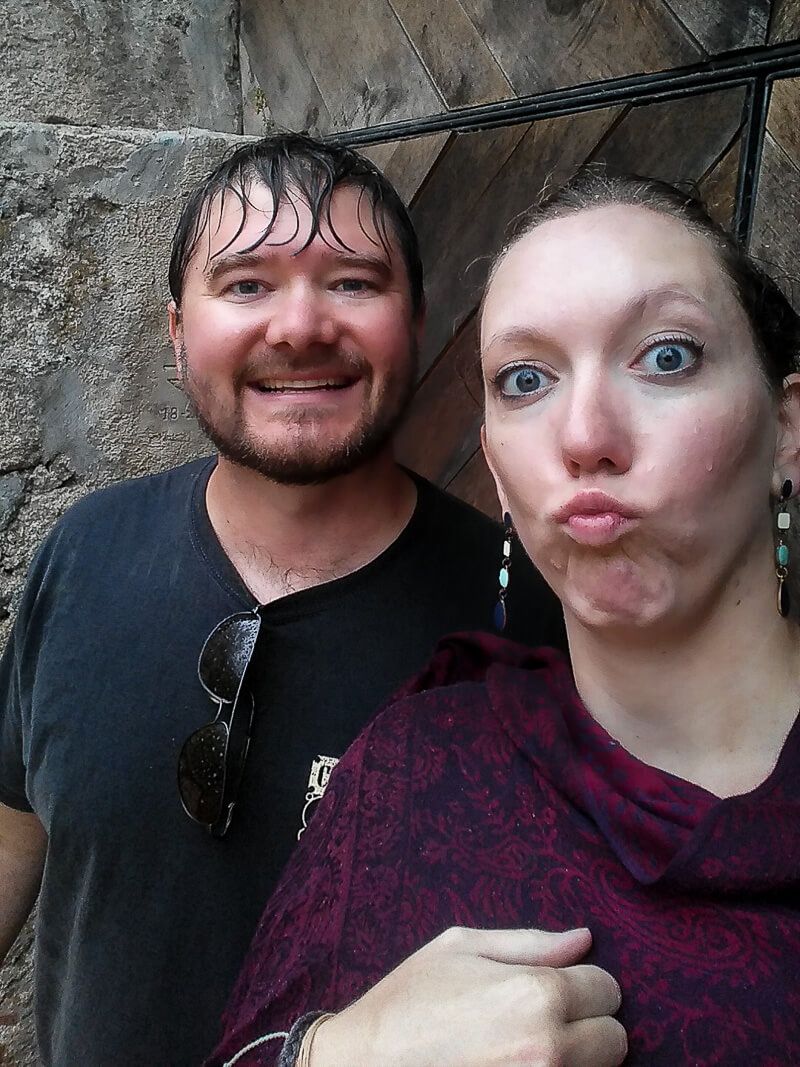
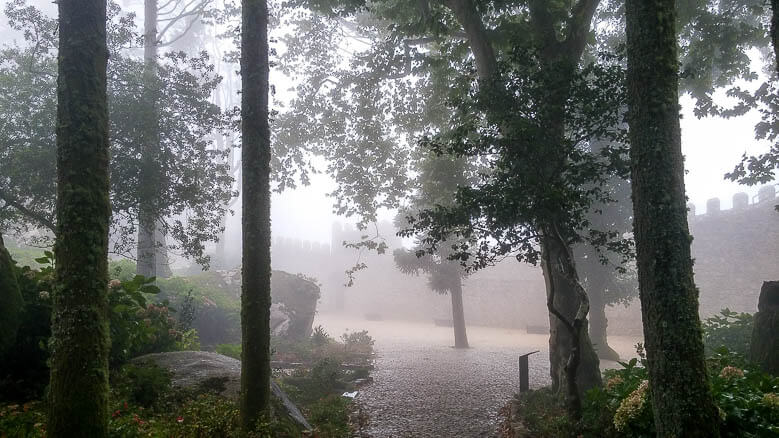
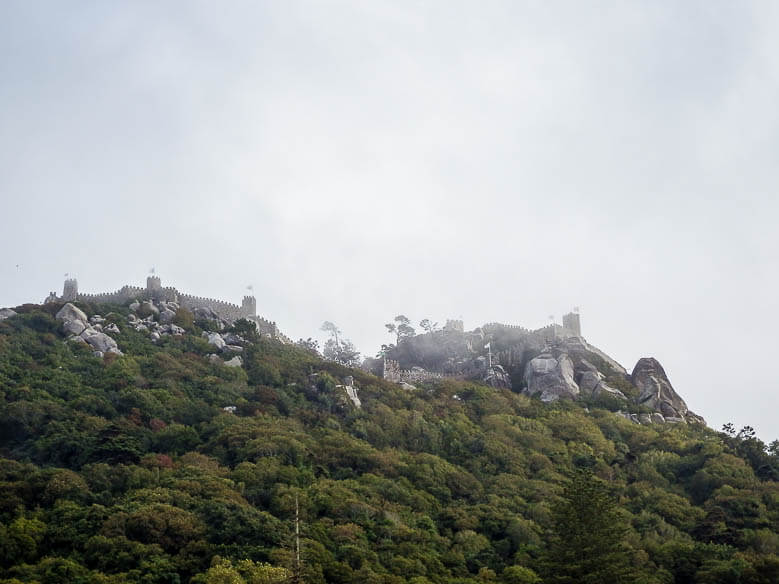
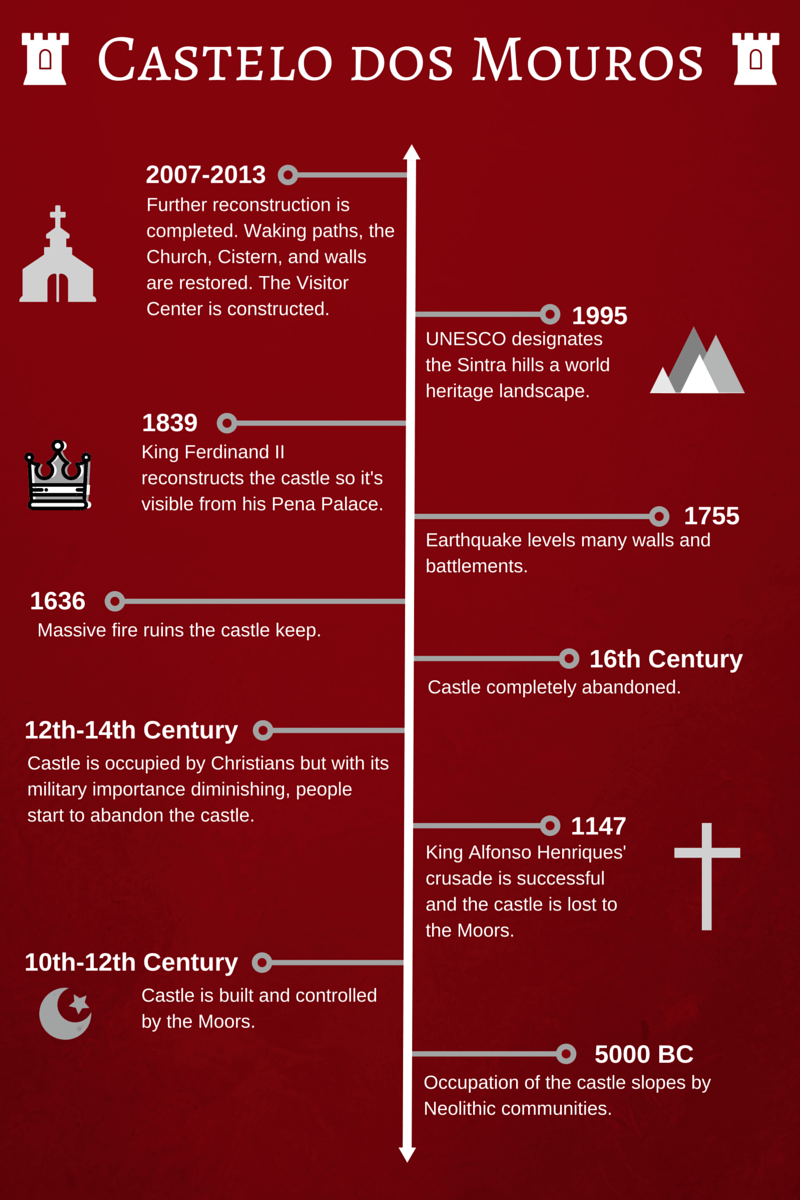
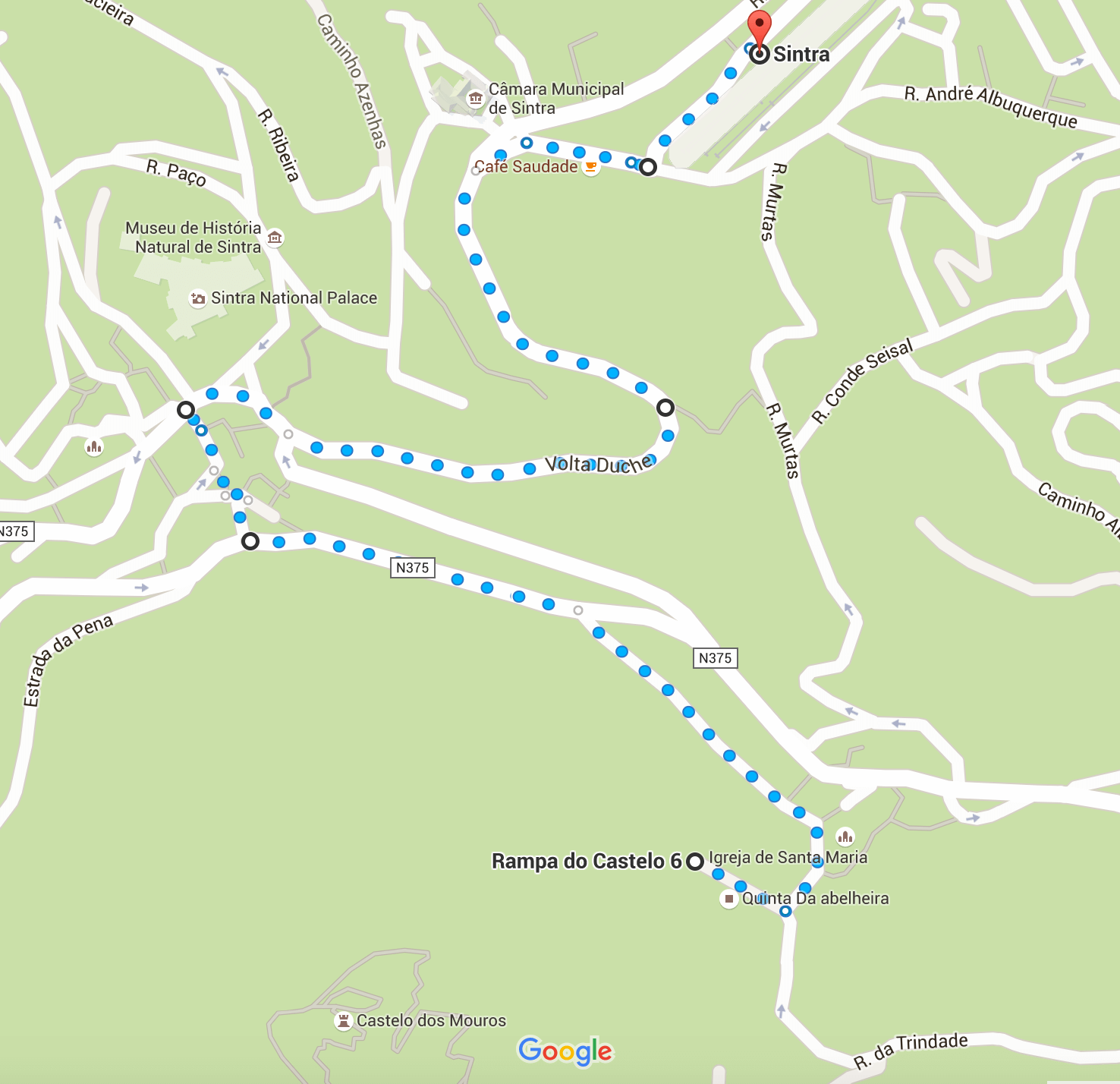
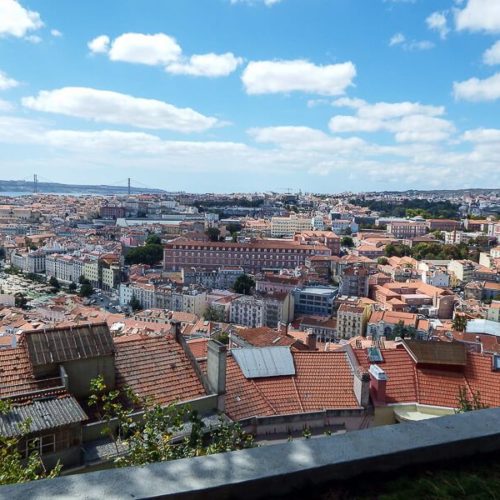
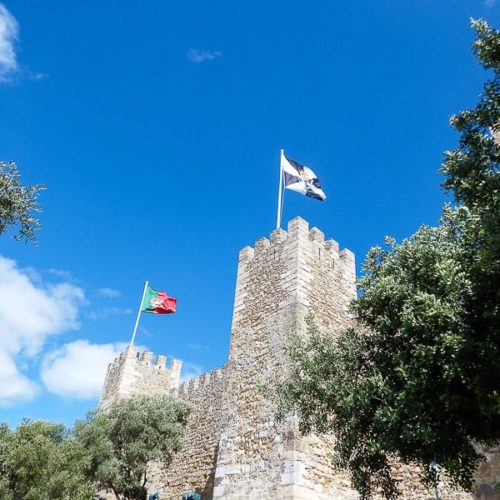
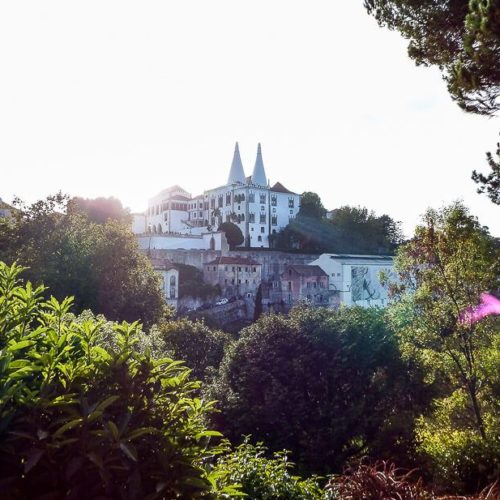
Wow, how beautiful in the fog! This sounds like a wonderful adventure, I can’t wait to see a castle in real life! 🙂
It really was beautiful Indy! I hope you get to see a castle soon. I love them but I will admit I am kind of a castle junkie. I tend to plan whole vacations around them. Though I’ve never had any regrets about that! They are so awe-inspiring.